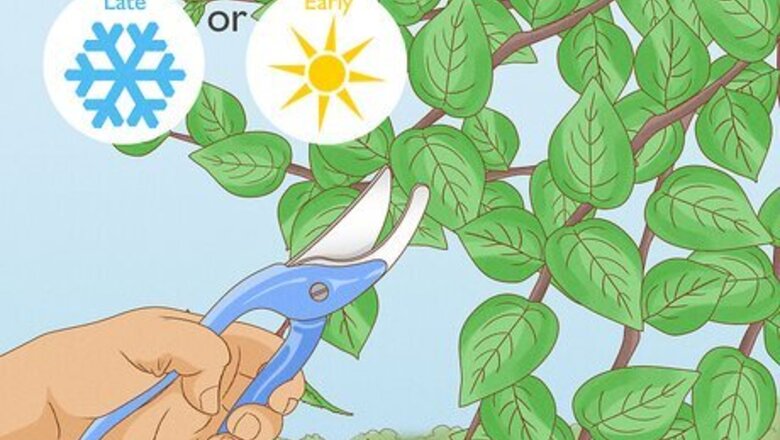
views
Pruning Your Tree
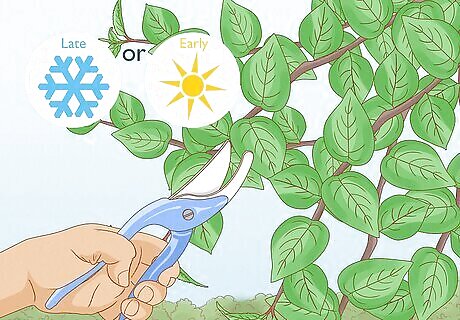
Choose the right time. A persimmon is a wonderful tree to have in your yard or orchard. They are visually pleasing and bear a delicious fruit. Take care to pick the right time to prune your persimmon. Prune your tree in late winter or early spring. February and March are good choices. You should prune your persimmon when the tree is dormant. This will ensure you don't interfere with the bearing of fruit. Prune your tree once a year. This will help improve the structure and limit the chance of alternate bearing. Every year, prune out some of the new growth and heading (the tips) of the other branches. You should also prune during the fruiting season if the branches are too heavy and the limbs are cracking from the load. Remove about ¼ of fruit or thin out the fruit bearing limbs.
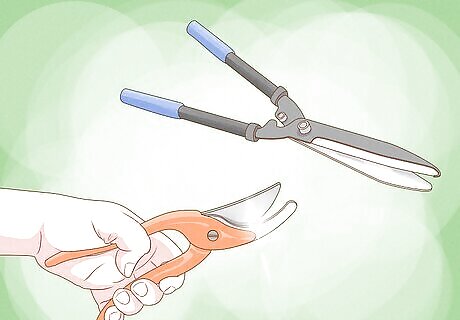
Sharpen your tools. When you are preparing to prune your tree, you'll need to gather the right tools. It is best to use bypass shears and pruning loppers. You can purchase both at gardening supply stores. Make sure that your tools are sharp. You should sharpen your implements each winter. Ask the local nursery if they offer a sharpening service. If you want to do it yourself, use caution and watch a video tutorial. It is also important to use clean tools. Pour a small amount of rubbing alcohol on a clean rag and wipe your tools in between each tree or shrub that you are pruning. This will help to reduce the spread of pathogens and disease.
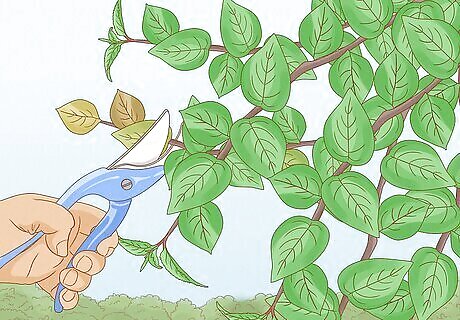
Complete corrective pruning. In order for your tree to remain healthy, you need to remove the dead weight. Corrective pruning is the process of removing dead or dying branches. You should also remove any diseased branches. Use your bypass shears for any twigs smaller than 1/4 inch. Use pruning loppers for larger dead branches. You can also cut off any backward bending branches. Those branches do not bear fruit. Make sure that if you are standing on a ladder, it is steady, not wobbly.
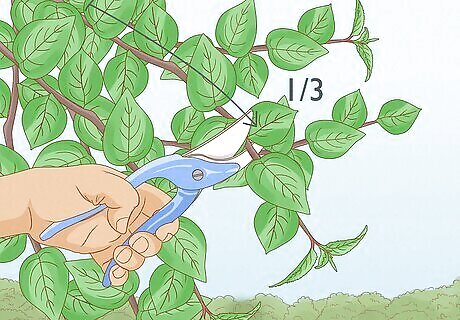
Trim other branches. After you get rid of the dead branches, turn your attention to the rest of the tree. Cut the length of each branch by 1/3. This encourages growth. Cut the branches to a point near a bud. Choose a bud that is facing the direction that you want the tree to grow. Cut at an angle within 1/2 inch of the bud. The buds look like large lumps, which makes them easy to identify. Remove the crossed and crowded branches from the center of the tree. This will allow your tree to grow in an open, pleasing shape.

Consider the age of your tree. The younger your tree, the more you will need to prune it. If your persimmon is between 1-3 years of age, you should aggressively prune it. Make sure that you do leave the small, low horizontal branches intact for future fruit growing. If you have a new tree, cut it to a very short length. Make sure that it is no more than 24–30 inches (61–76 cm) tall. Pruning the tree while it is young develops a strong framework of fruit bearing branches. Your persimmon tree will require less attention as it grows older. Just remove approximately 20% of the growth during each year's pruning.
Training Your Persimmon
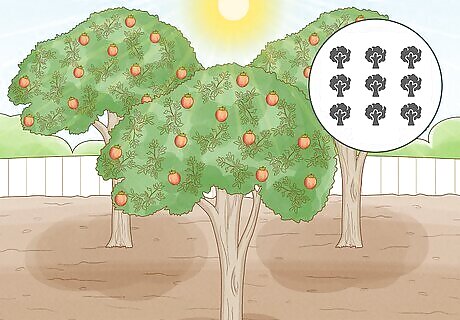
Learn about growth systems. You can train your tree to grow into a distinct shape. You can also dictate the direction of growth. Before you begin pruning your persimmon, take some time to learn about growth systems. Growth systems offer many benefits. For example, choosing a uniform system will allow more sunlight to filter through the canopy and reach the trees in your orchard. If all of your trees are growing in a uniform system, it will simplify your operations. It will be easier to prune and harvest. A central growing system can also reduce limb breakage. This will help your tree to bear more fruit.
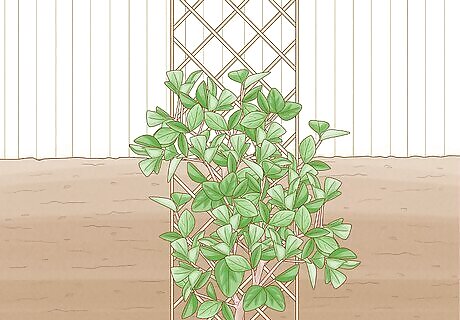
Use a trellis. One common training system requires the use of a trellis. You will need a frame trellis. You can either build or purchase one at a garden supply center. If you are attempting to grow espalier fruit trees, this is a good system for you. Espalier is when trees and branches are all pruned to be on one level. This is commonly done against a wall or fence. Plant your persimmon tree approximately 6-10 inches from the fence. If your tree borders a walkway, you will need the frame trellis to support and train the branches. With a young tree, you can also train by movement. This means you should bend the branches in the direction you want them to grow. You don't always have to prune each branch of a young tree.
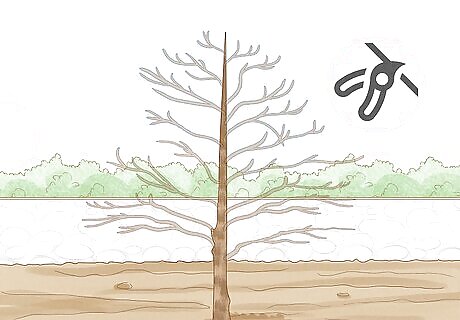
Use a central leader. The central leader system is one of the most common ways to train a persimmon tree. It is an inexpensive and basic system. One disadvantage is that your tree might grow taller than you wish, since it is not trellised. After planting, choose a healthy shoot near the center of your tree. This will be your central leader. During pruning, remove shoots near the central leader. You do not want other branches to compete with it. In the winter, prune your leader by 1/3. Tie down competing branches. Repeat this process for two years. This will keep any side branches from becoming strong enough to compete with the central leader.
Caring For Your Persimmon Tree
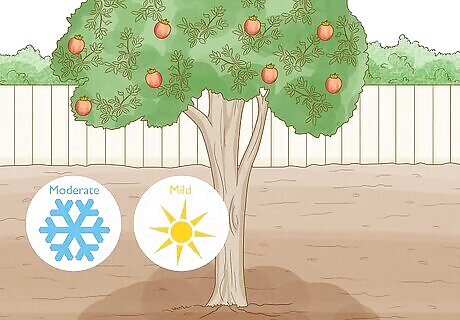
Choose the right environment. Persimmon trees are a great addition to your home orchard. They are aesthetically pleasing and produce nice fruit. Like any tree, persimmons flourish under certain conditions. Make sure that you live somewhere that is temperate enough for a persimmon tree. They flourish in areas with moderate winters and mild summers. These trees do not perform well in high heats. They cannot thrive in desert climates, and the bark is especially susceptible to sunburn. The first persimmon tree was grown in China. They have proven to be very adaptable to the climate in California.

Fertilize the tree. Persimmons can flourish with a minimum of fertilization. They will grow in a variety of soil types, but they will do best in a soil that is well-drained. Try to plant your tree in a patch of earth that will be fully exposed to the sun. Purchase some organic fertilizer at your garden center. Use a balanced fertilizer with an NPK (nitrogen phosphorous potassium) value of 10-10-10. This type of fertilizer is recommended for persimmons with a rate of 1lb per inch of trunk diameter.
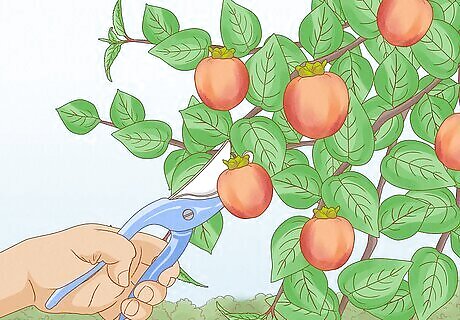
Harvest the fruit. Persimmons are orange or red-brown in color. They grow on trees like plums, but look similar to a small tomato. Persimmons taste pleasantly sweet, particularly when they are very ripe. They are less sweet when they are not fully ripe. Persimmon trees are very slow to bear fruit. It can take up to 8 years for your tree to fully produce a crop of persimmons. Persimmon trees are sometimes alternate bearing. This means that a single tree may produce a large crop one year, and almost no fruit the next year. Pick your persimmons in early fall. You can tell when they are ripe when they become more orange and reach the consistency of a soft-boiled egg.



















Comments
0 comment